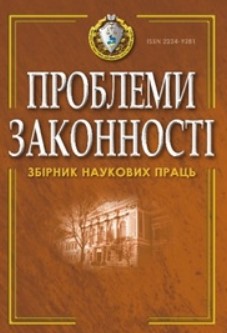До питання класифікації працівників ІТ-сфери
On the Issue of the Classification of IT Sphere Employees
Author(s): Daria I. ZaikaSubject(s): ICT Information and Communications Technologies, Labour and Social Security Law
Published by: Національний юридичний університет імені Ярослава Мудрого
Keywords: employee; IT industry; classification;
Summary/Abstract: The relevance of the article lies in the fact that new phenomena in the field of work of IT employees make it necessary to adapt and update institutions of labor law in order to preserve the effectiveness of legal regulation of labor relations by state bodies. Since the beginning of the full-scale invasion, Ukrainian workers and employers have been doing their best to adapt to new living and working conditions. The realities of war forced the national business to become more flexible and able to adapt quickly. In addition, the IT sector is rapidly developing in the conditions of digitization of society and production processes, so new professions and positions are emerging. Generalization and systematization of IT workers will make it possible to conduct an in-depth analysis of them as subjects of labor law. Therefore, the purpose of this article is to create a comprehensive classification of IT employees. In order to achieve this goal, the work was carried out in two stages: 1) determination of the role of classification in labor law; 2) identification of criteria for classification of IT workers. To solve the tasks of the article, the comparison method was used (allows you to compare IT specialists with each other according to selected criteria), interdisciplinary synthesis (allows you to synthesize data on the structural properties of objects of different disciplines, namely labor law and legal theory), the method of isolating abstraction ( makes it possible to single out some characteristics of IT workers, as a result of which a technical IT worker will be considered as a separate type of worker in this field), the specification method (allows you to check the correctness of the ideas obtained as a result of abstraction about the properties of real objects and to single out their essential connections ties, properties and relations), generalization (allows to extend the general characteristics of a group of objects to all objects of the set of IT workers, as well as to highlight the essential characteristics of individual types of IT workers), teleological method (allows to analyze the content of the legal prescription, revealing and revealing the goals of the adoption of the legal norm and, in relation to it, the grammatical and logical essence the legislator's formulations contained in the texts of normative and legal prescriptions), the comparative legal method (it makes it possible to compare legal concepts, phenomena and processes, to find out similarities and/or differences between them). During the study, the concept of ′′IT worker′′ was analyzed, the concept of ′′classification′′ was studied, two essential features (criteria) were identified for the classification of IT workers (by professional groups and by qualification level), the types of IT workers were determined in accordance with the established criteria In addition, the concept of ′′IT employee′′ was distinguished from the related concepts of ′′gig specialist′′, ′′IT specialist′′, ′′IT specialist′′. An opinion was expressed about the expediency of developing a separate edition of the Handbook of qualification characteristics of professions called ′′IT sphere′′. The results of the study will provide an opportunity to further examine the institute of occupational health and safety of workers in this field in more depth
Journal: Проблеми законності
- Issue Year: 2023
- Issue No: 160
- Page Range: 118-134
- Page Count: 17
- Language: Ukrainian

